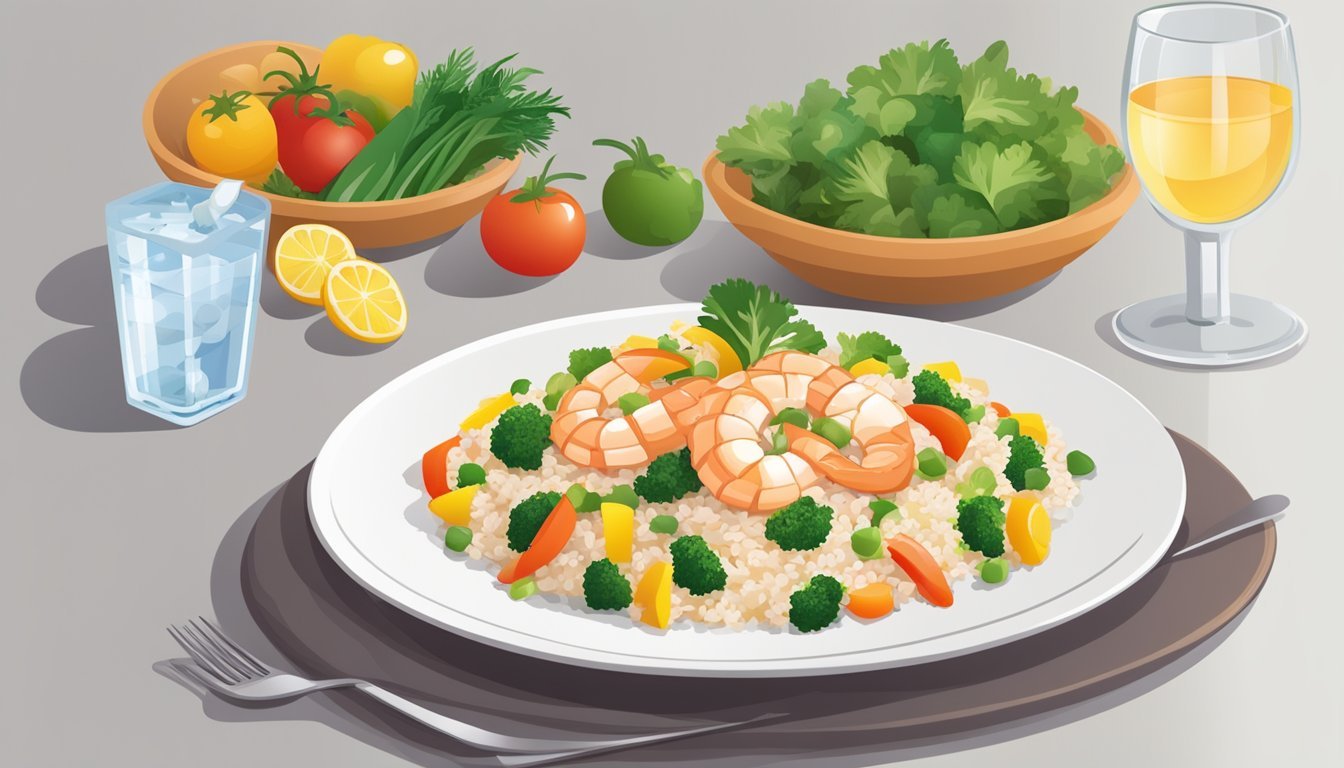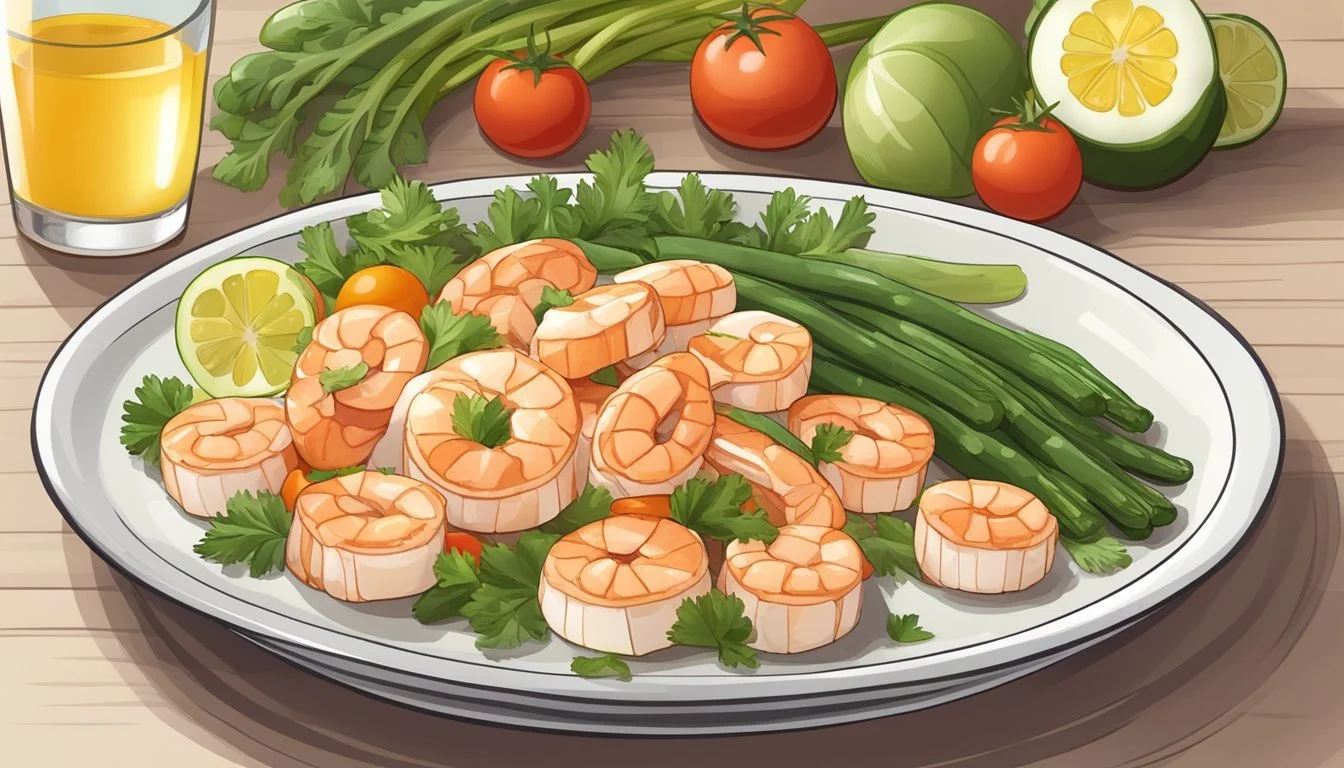Can Diabetics Eat Scampi?
Discover Safe Dining Tips
People with diabetes often wonder if they can enjoy dishes like scampi without compromising their health. The good news is that diabetics can eat scampi, provided that the recipe adapts to their dietary requirements. Traditional scampi recipes often include butter and garlic, which are relatively safe for diabetic diets; the key is controlling portions and ingredients.
Certain modifications can make scampi more diabetic-friendly. For example, using olive oil instead of butter and incorporating fresh lemon juice can add flavor without adding unnecessary fats or sugars. Additionally, pairing scampi with non-starchy vegetables instead of pasta can help manage carbohydrate intake, making the dish more suitable for a diabetic diet.
It's essential to choose high-quality shrimp, as they are high in protein and low in carbs, making them a perfect fit for a diabetic meal plan. By focusing on these adjustments, diabetics can savor a delicious plate of scampi without worry.
Understanding Diabetes and Diet
Those with diabetes need to manage their blood sugar levels carefully, and diet plays a crucial role in this. Proper dietary choices can help in maintaining optimal health and preventing complications.
The Impact of Diet on Blood Sugar
Diet directly affects blood sugar levels. Consuming high-glycemic foods causes rapid spikes in blood sugar. For diabetics, these spikes can be dangerous. Foods rich in simple carbohydrates, like sweets and white bread, should be limited. Instead, focusing on complex carbohydrates, such as whole grains and vegetables, helps stabilize blood sugar levels.
Fiber is particularly beneficial as it slows the digestion process. This results in a steadier release of glucose into the bloodstream. Protein and fats also help in moderating blood sugar levels, making them essential components in a diabetic-friendly diet.
Macronutrients and Diabetes Management
Protein: Protein is critical in a diabetic diet. It helps in repairing tissues and managing blood sugar by having minimal effect on glucose levels compared to carbohydrates. Good sources include lean meats, poultry, fish, beans, and tofu.
Carbohydrates: Carbs are the primary source of energy but must be chosen wisely. Focus on high-fiber carbs, such as legumes, whole grains, and vegetables. These moderate the absorption of sugar into the bloodstream.
Fat: Healthy fats, like those found in nuts, seeds, and avocados, help in maintaining overall health. They provide sustained energy and improve satiety, which can aid in weight management, an important factor for diabetes control. Avoid trans fats and limit saturated fats to prevent cardiovascular issues associated with diabetes.
Nutritional Profile of Scampi
Scampi, primarily consisting of shrimp, offers a range of nutrients that are beneficial, yet it also presents certain risks, particularly for those managing diabetes.
Health Benefits of Scampi
Shrimp is low in calories and high in protein. A 3-ounce serving contains roughly 84 calories and 20 grams of protein. This makes it an excellent choice for maintaining muscle mass and satiety.
Shrimp is rich in Omega-3 fatty acids, which are essential for heart health. While the content is lower than in fatty fish like salmon, it still offers a good amount of these beneficial fats. Vitamins and minerals in shrimp include selenium, vitamin B12, and iodine, which support various bodily functions.
Low in saturated fat, shrimp contains mostly unsaturated fats. This can be helpful for those managing cholesterol levels. Including shrimp in a balanced diet helps in achieving nutritional needs without excessive calories.
Potential Risks for Diabetics
Though shrimp is nutritious, it has a moderate cholesterol content. A 3-ounce serving contains approximately 166 milligrams of cholesterol. Diabetics often need to monitor cholesterol levels to prevent cardiovascular issues.
Sautéing shrimp in butter or oil for scampi adds saturated fat and calories. This can be a concern for diabetics needing to manage blood glucose and lipid profiles carefully. Opting for healthier oils like olive oil can mitigate some of these risks.
Shrimp can be high in sodium, particularly if pre-seasoned or prepared with added salt. High sodium intake is associated with high blood pressure. Diabetics need to be cautious about sodium to maintain overall heart health.
Thus, while shrimp scampi can be part of a healthy diabetic diet, modifications in preparation methods are essential for it to remain beneficial.
Safe Preparation of Scampi for Diabetics
Ensuring that Shrimp Scampi is safe for diabetics involves choosing the right ingredients and cooking methods. This helps maintain blood sugar levels while still enjoying a delicious meal.
Alternative Ingredients for Better Health
Replacing traditional ingredients with healthier alternatives can make Shrimp Scampi suitable for diabetics. Olive oil is a preferred choice over butter due to its healthier fats. Instead of regular pasta, whole grain or zucchini noodles can be used to reduce carbohydrate intake.
Garlic and lemon juice provide flavor without adding extra calories or sugar. Choose low-sodium broth if the recipe calls for it. Fresh parsley and a small amount of white wine can also be included, keeping in mind the moderation of alcohol consumption as it can affect blood sugar.
Cooking Methods to Reduce Fats and Sugars
Using a non-stick skillet with minimal oil can reduce the amount of fat absorbed during cooking. Sauté garlic until fragrant but not browned to avoid creating bitter compounds.
Cooking over medium-high heat until shrimp turn pink ensures they are cooked through without becoming tough. Add ingredients like lemon juice, parsley, and a dash of white wine with care to avoid unnecessary fat and sugar.
Keeping an eye on the cooking time helps in retaining the nutrients of the ingredients while making Shrimp Scampi a healthier option for diabetics.
Recipe Enhancements for Diabetic Diets
Creating a shrimp scampi dish suitable for diabetics involves careful selection of ingredients to maintain flavor while minimizing sugar and sodium content. Additionally, incorporating diabetes-friendly side dishes can enhance the meal's nutritional profile without sacrificing taste.
Flavoring without Excess Sodium or Sugar
When preparing shrimp scampi for a diabetic diet, reducing sodium and sugar is crucial. Fresh parsley, garlic, and lemon are excellent for imparting robust flavors without relying on salt or sugar.
Use lemon juice to add a tangy zest, which can brighten the dish without additional sodium. Fresh garlic sautéed until golden adds depth – apply this technique to create a garlic-infused base with olive oil.
While adding salt is inevitable, use it sparingly. Substitute some salt with white pepper or black pepper to enhance flavor.
For a touch of sweetness, natural ingredients like caramelized onions can add subtle sweetness without added sugars. These adjustments help maintain savory profiles while being mindful of diabetes management.
Incorporating Diabetes-Friendly Side Dishes
Pair shrimp scampi with sides that support a diabetic-friendly diet. Salads of leafy greens, like spinach or kale, are excellent choices. They are low in carbohydrates and can be dressed with light lemon and olive oil vinaigrette.
Steamed or roasted vegetables like broccoli, bell peppers, and zucchini provide nutritional benefits and complement the flavors of shrimp scampi.
Whole-grain options like quinoa or barley add fiber content, aiding in insulin resistance management. For a lighter option, a cucumber and dill salad provides a cooling contrast to the savory scampi.
These side choices ensure a balanced meal, rich in necessary nutrients and low in components that could negatively impact blood sugar levels.
Serving and Portion Control
Proper serving sizes and a balanced meal composition are crucial for diabetics when consuming scampi to maintain stable blood sugar levels and overall health.
Determining Adequate Serving Sizes
For a diabetic-friendly scampi dish, portion control is essential. An appropriate serving size of scampi is usually around 3-4 ounces (85-113 grams) of shrimp, providing a good source of protein without excessive calories.
When preparing the dish, ensure limited use of high-calorie ingredients like butter or cream. Instead, use olive oil or a minimal amount of butter for healthier options.
Monitoring carbohydrate intake is also critical. If serving scampi with pasta, such as linguine, keep the portion to about 1/2 cup cooked. This helps manage carbohydrate consumption, important for controlling blood sugar levels.
Balancing Scampi with Other Meal Components
To create a balanced diabetic-friendly meal, pair scampi with non-starchy vegetables, which provide fiber and essential nutrients without significantly raising blood sugar.
Consider serving scampi over a bed of mixed salads instead of pasta to reduce carbohydrate load. Alternatively, incorporating whole grain pasta can be another option, but keep portions small, around 1/2 cup cooked.
Including a source of lean protein, like grilled chicken or fish, can further balance the meal.
Adding a portion of low-glycemic index foods such as an apple or a cup of milk may also be beneficial. These components help mitigate spikes in blood sugar and provide sustained energy.
Beyond Scampi: Diabetes-Friendly Seafood Options
Those with diabetes can benefit from various seafood choices rich in nutrients like omega-3 fatty acids, lean proteins, and vitamins. Learning how to cook seafood properly ensures these nutrients are preserved, making the meals both delicious and healthy.
Healthier Seafood Varieties for Diabetics
Certain types of seafood are particularly advantageous for diabetics due to their low carbohydrate content and rich nutrients. Salmon, for instance, is high in omega-3 fatty acids, which are known to support cardiovascular health. It's also rich in protein, promoting satiety and helping control blood sugar levels.
Tuna is another excellent choice. It's lean, low in fat, and high in protein. It's also versatile and can be added to various dishes, providing a nutritious boost.
Cod offers a lean, low-calorie option and is packed with essential vitamins and minerals. Its mild flavor makes it easy to incorporate into numerous recipes.
Shellfish such as shrimp and scallops are also diabetes-friendly. They contain minimal carbohydrates and plenty of protein, making them an excellent addition to a diabetic diet.
Cooking Techniques for Preserving Nutrients
Proper cooking techniques are crucial for maintaining the nutrients in seafood. Broiling is an effective method as it cooks fish quickly, preserving its essential nutrients. This technique also requires minimal added fats, making the dishes healthier.
Baking is another beneficial method. It allows the fish to cook evenly and retains moisture without the need for excessive oil or butter. Adding herbs and spices can enhance the flavor without adding unnecessary calories.
Steaming helps maintain the natural flavors and nutrients in seafood. It's a gentle cooking method that prevents the loss of essential vitamins and minerals.
Incorporating these methods into meal preparation ensures that diabetic individuals can enjoy their seafood while maximizing the health benefits.
Supporting a Diabetic Diet: Professional Guidance
Individuals diagnosed with diabetes can effectively manage their condition with tailored dietary strategies. This section highlights key professional advice to help diabetics incorporate meals like shrimp scampi into their diet responsibly.
Consulting with a Registered Dietitian (RD)
Consulting with a Registered Dietitian (RD) provides diabetics with specialized knowledge and guidance. An RD evaluates individual health needs, taking into account factors like blood glucose levels, medical history, and personal preferences.
They offer evidence-based recommendations to ensure that meals, such as shrimp scampi, are prepared in a diabetic-friendly manner. For instance, an RD might suggest using olive oil instead of butter or incorporating more herbs and spices to enhance flavor without added sodium or sugar.
RDs also help diabetics navigate portion control, emphasizing balanced meals. This professional support aligns dietary habits with overall diabetes management, promoting better health outcomes.
Creating a Personalized Diabetic Meal Plan
Creating a personalized diabetic meal plan involves carefully selecting ingredients that stabilize blood sugar levels. Lean protein sources, such as shrimp, are excellent due to their low impact on blood glucose.
A meal plan tailored by a nutrition expert may include specific portion sizes, timing of meals, and snack options. For shrimp scampi, substituting traditional pasta with spiralized vegetables or whole-grain options benefits those monitoring carbohydrate intake.
Additionally, balancing meals with non-starchy vegetables, healthy fats, and lean proteins supports blood sugar management. Planning tools, like meal prep guides or carb counting applications, can aid in maintaining consistency and making informed choices.
Maintaining flexibility within the meal plan is crucial, allowing for occasional indulgences while keeping track of daily carbohydrate and calorie limits.








